This basil chimichurri sauce is fresh, tangy, and packed with flavor. It's a delicious twist on the classic Argentine parsley sauce. With fresh basil, oregano, garlic, lemon, and vinegar, this versatile sauce takes just minutes to make.
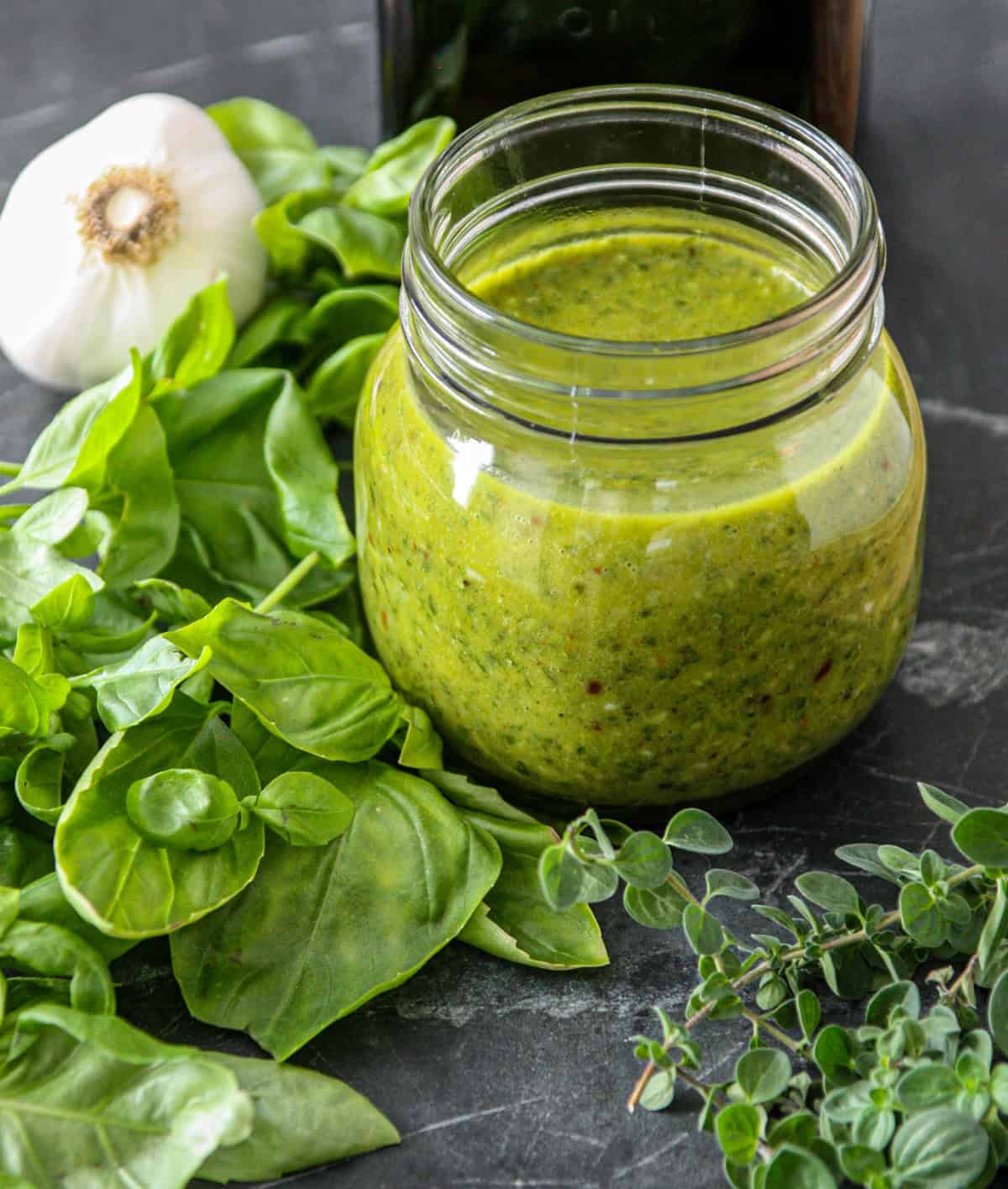
Want to save this recipe?
Enter your email & I'll send it to your inbox. Plus, get great new recipes from me every week!
Chimichurri is an uncooked, fresh sauce, using fresh herbs, garlic and vinegar. This green sauce originated in Argentina and Uruguay, usually as a sauce for steak or beef. Traditional chimichurri sauce is made with fresh parsley as the main ingredient, as in this recipe: chimichurri sauce.
I love the parsley version, and often make it when I have an abundance of parsley in my herb garden. This time, however, my garden is overflowing with basil, too. This basil chimichurri is the result, and it's delicious.
Just like changing up the basil in basil pesto with parsley pesto, or sage pesto, chimichurri is a great sauce for other herbs besides parsley.
Jump to:
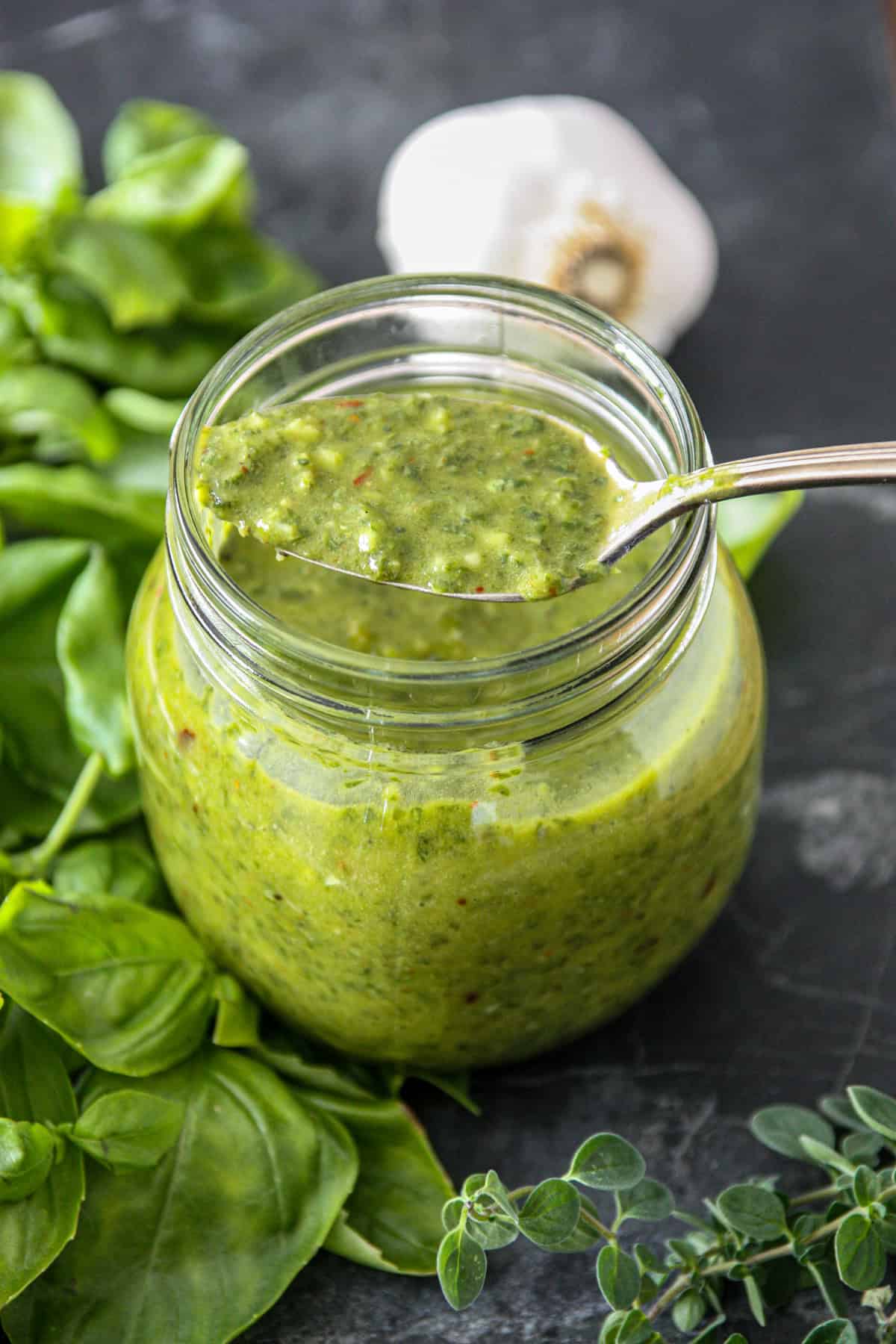
What's the difference between pesto and chimichurri?
Both pesto and chimichurri are green, uncooked sauces. However, they are not the same. Pesto, usually made with basil, typically contains pine nuts, and parmesan cheese. It can also be made with different herbs, nuts or cheeses, too. Pesto is a richer, creamier sauce that's often served as a pasta sauce.
Chimichurri doesn't contain nuts or cheese. It's usually made with parsley as the main ingredient and it's tangy and vinegar forward. Chimichurri is a lighter, fresh tasting condiment for meat and vegetables.
Why you'll love this recipe
- Quick and easy. This basil chimichurri recipe takes just a few simple ingredients and about 5 minutes to make, and there's no cooking involved.
- Versatile. We love this flavorful sauce on grilled meats like flank steak, or pork tenderloin. But it's also amazing on chicken, fish, shrimp, or vegetables.
- Fresh and flavor packed. This recipe showcases the vibrant flavors of fresh basil, as well as fresh oregano, garlic, olive oil, and lemon. It's an easy and delicious way to use fresh herbs from your garden or farmer's market.
- Allergy friendly. This recipe is gluten-free, dairy-free, and vegan.
Ingredient notes
- Basil. Basil is the star of this recipe, and fresh basil is a must. There are many different varieties of basil, and most of them will work for this chimichurri recipe. I currently have Genovese, or common sweet basil, growing in my garden. I also have Thai basil, which is the only variety that I don't recommend for this recipe. I save Thai basil's strong, licorice-like flavor for Asian dishes, like my red Thai curry chicken soup.
- Oregano. Use fresh oregano if at all possible. However, you can substitute dried oregano if fresh is unavailable. Use two teaspoons of dried oregano.
- Olive oil. This recipe is where you want to use a good quality extra virgin olive oil.
- Red wine vinegar. This is the vinegar traditionally used for chimichurri. However, you can substitute white wine vinegar, white balsamic, or apple cider vinegar.
- Lemon juice. Use freshly squeezed lemon juice to add a bright, citrus note to the chimichurri sauce.
- Garlic. Fresh garlic cloves are best, but you can use pre-minced jarred garlic.
- Red pepper flakes. A tiny hint of spice really finishes this sauce perfectly.
- Kosher salt and black pepper.
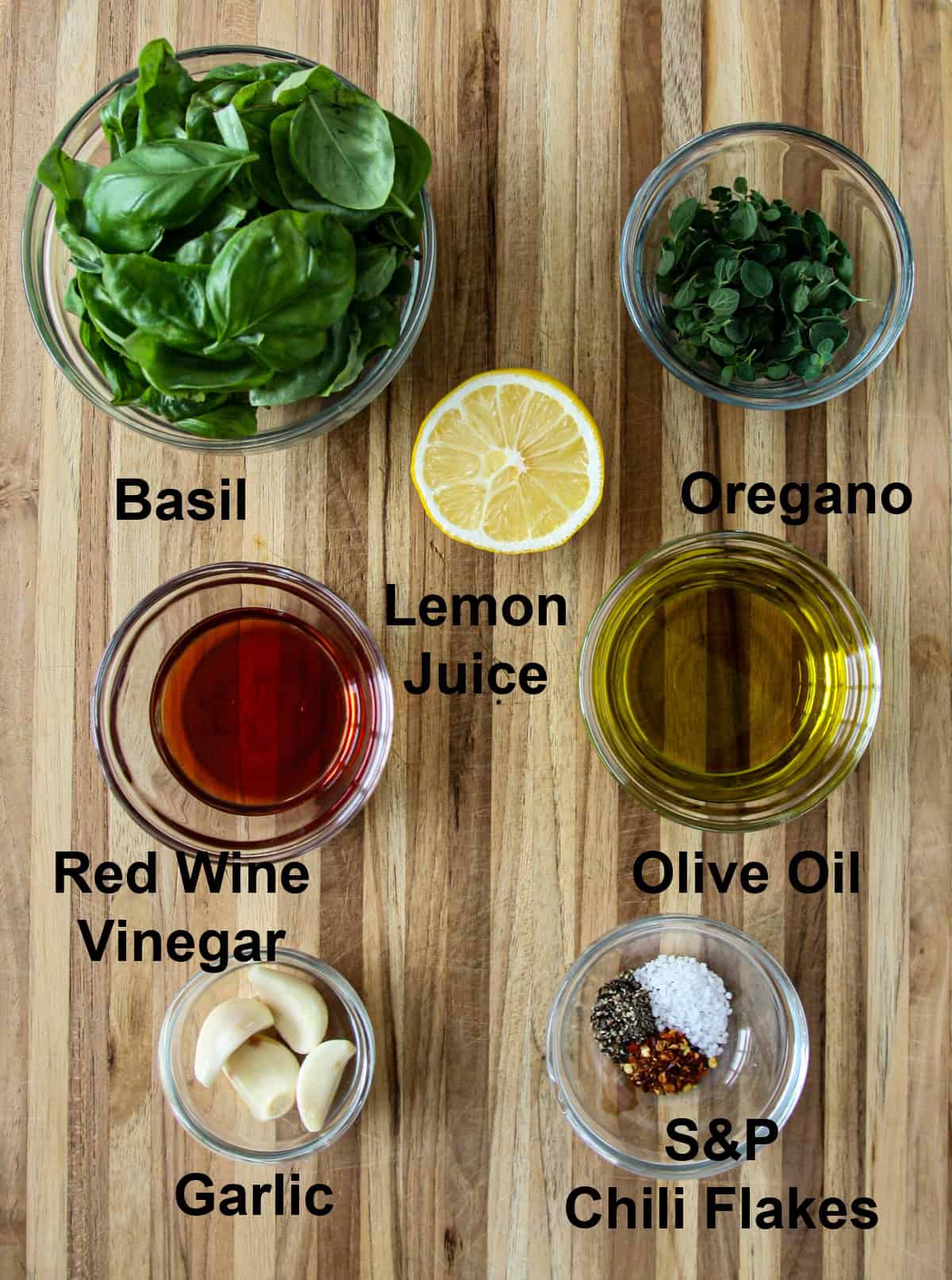
How to make it, step by step
- Put all of the ingredients in the bowl of a food processor or a blender.
- Pulse until finely chopped and the oil is emulsified.
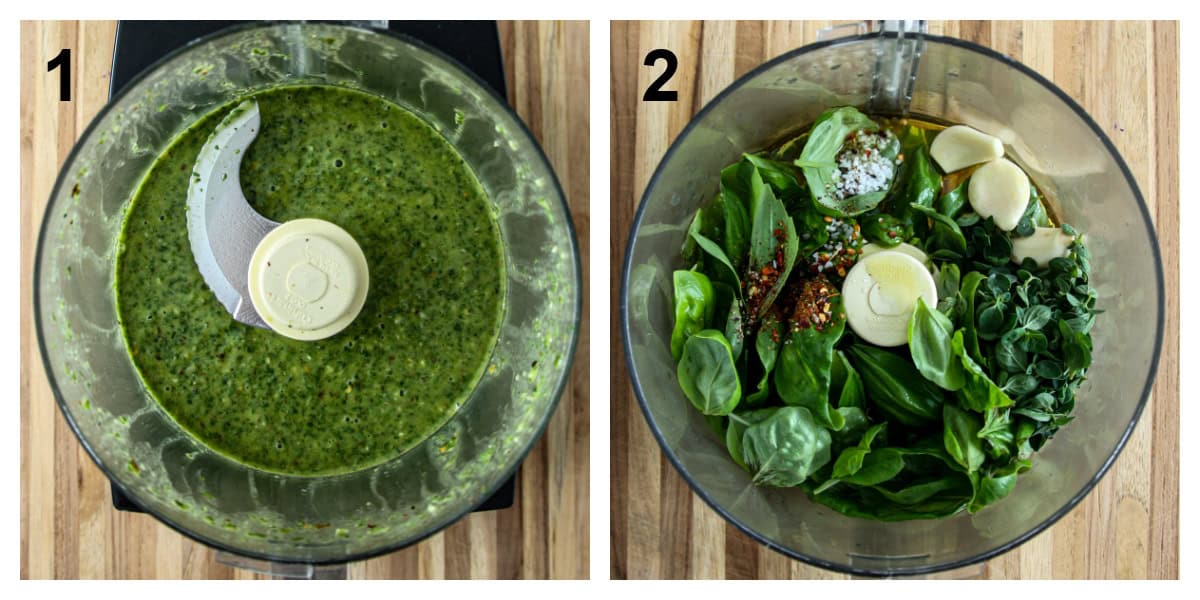
Variations
This recipe works with many other fresh herbs. Try a combination of cilantro and parsley, which compliments Mexican and Thai dishes. Replace the lemon juice with lime juice.
If you like more spice, add more red pepper flakes. Or, add a fresh jalapeno, or even a hotter fresh chili. You can also add a smoky note with a teaspoon of smoked paprika.
You can add a quarter cup of diced red onion or shallots. I only recommend this if you are making the sauce by hand as a salsa. In the blender or food processor, the onion can overpower, rather than compliment, the fresh herb flavors.
Pro Tips
- Basil: For this basil chimichurri, I use freshly picked basil. If you don't have that available, shop for fresh basil at your grocery store or farmer's market. Look for bright green, vibrant leaves that are firm to the touch and not soft and wilted. Avoid any leaves with black or brown spots. Basil should have a strong, aromatic aroma.
- Sauce consistency: If you make this chimichurri sauce in a blender, immersion blender or food processor, pulse until you have your desired consistency. I like the sauce to be smooth, but still have texture. You can pulse longer until a thick sauce forms if that's what you prefer. You can also chop and combine the ingredients by hand for more of a chunky salsa. (or use a mortar and pestle).
- Seasonings: After the first pulse, taste and adjust seasonings (salt, pepper, chili flakes) to your liking.
- Make ahead: You can make this recipe ahead and store it in the fridge, in an airtight container. The olive oil will solidify a bit, so take the chimichurri sauce out of the fridge and let the sauce come to room temperature before serving.
- Storage: Homemade chimichurri will keep, in the fridge, in an airtight container, (a mason jar works great) for up to 4 days.
- To Freeze: Freeze the chimichurri in ice cube trays, then transfer the cubes to a re-sealable freezer bag. Freeze for up to three months. Defrost in the fridge. Be aware that freezing will change the texture and the chimichurri won't taste as fresh. However, it's still great for cooking and condiments.
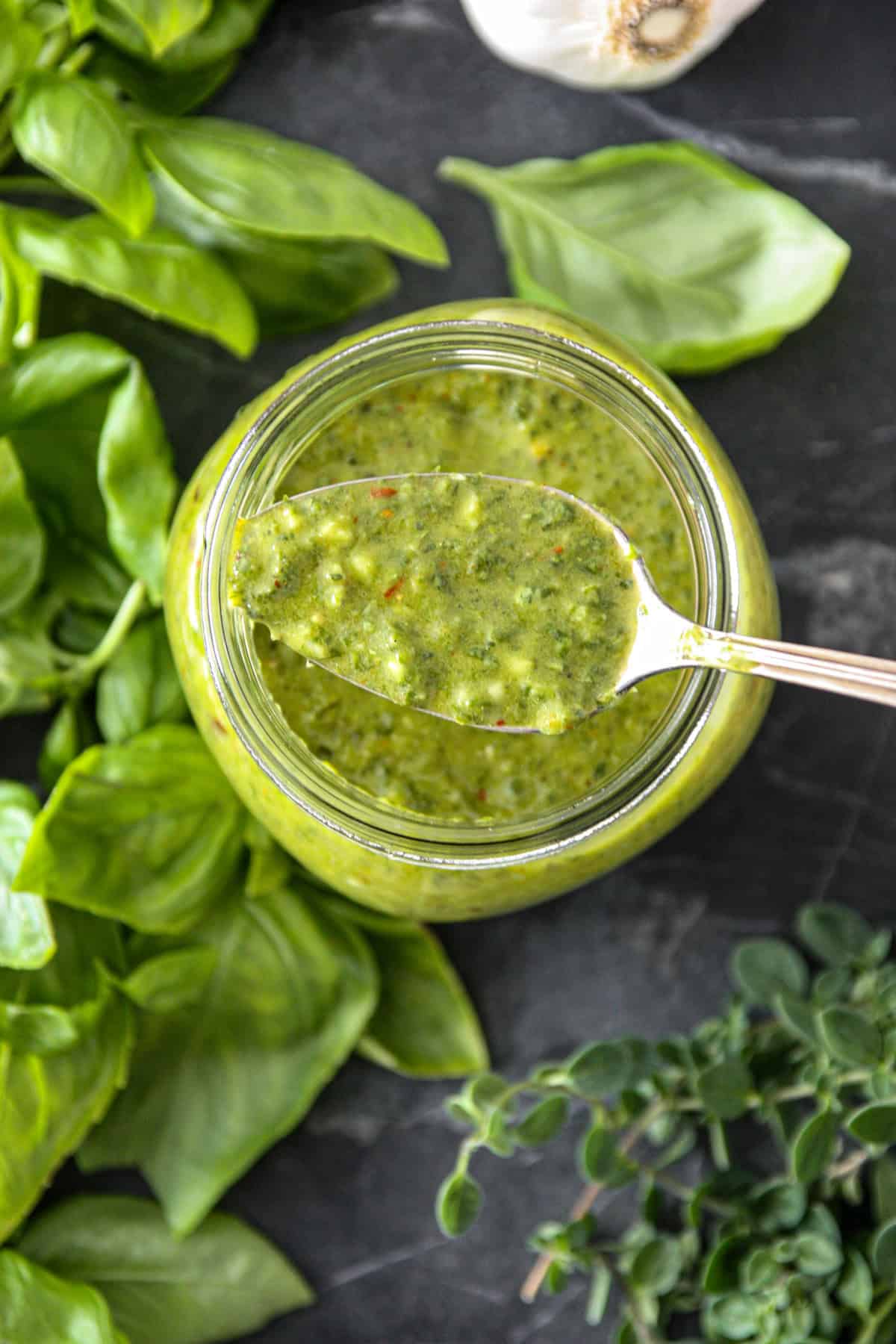
Serving suggestions
Basil Chimichurri has so many uses! It's perfect on steaks, like this air fryer flank steak, grilled chicken, especially these grilled boneless chicken thighs, or grilled shrimp. It's amazing on baked salmon or blackened cod, too. And always delicious with grilled pork tenderloin.
Use basil chimichurri sauce as a salad dressing, a taco topping, or a pasta sauce. It's great as a dip for crusty bread. We love it on vegetables, too. It perfectly compliments roast vegetables, and corn on the cob.
Did you make this recipe? Please leave a rating in the comments below and let us know how it turned out. Did you make any changes? We would love for you to share and your feedback is important! Thank you for visiting The Food Blog!
Recipe
Want to save this recipe?
Enter your email & I'll send it to your inbox. Plus, get great new recipes from me every week!
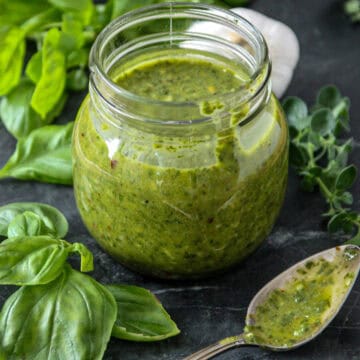
Basil Chimichurri
Ingredients
- 2 cups basil leaves
- ¼ cup oregano leaves
- ½ cup olive oil extra virgin
- ¼ cup red wine vinegar
- 2 tablespoon lemon juice ½ lemon
- 4 garlic cloves
- ¼ teaspoon dried red pepper flakes
- ½ teaspoon kosher salt
- ½ teaspoon black pepper
Instructions
- Put all ingredients in a blender or bowl of a food processor.
- Pulse, scraping down the sides of the food processor, to a fine consistency, or your desired consistency.
- Taste and adjust seasonings, if necessary.
- Serve at room temperature.
Notes
- Basil: For this basil chimichurri, I use freshly picked basil. If you don't have that available, shop for fresh basil at your grocery store or farmer's market. Look for bright green, vibrant leaves that are firm to the touch and not soft and wilted. Avoid any leaves with black or brown spots. Basil should have a strong, aromatic aroma.
- Sauce consistency: If you make this chimichurri sauce in a blender, immersion blender or food processor, pulse until you have your desired consistency. I like the sauce to be smooth, but still have texture. You can pulse longer until a thick paste forms if that's what you prefer. You can also chop and combine the ingredients by hand for more of a chunky salsa. (or use a mortar and pestle).
- Seasonings: After the first pulse, taste and adjust seasonings (salt, pepper, chili flakes) to your liking.
- Make ahead: You can make this recipe ahead and store it in the fridge, in an airtight container. The olive oil will solidify a bit, so take the chimichurri sauce out of the fridge and let the sauce come to room temperature before serving.
- Storage: Homemade chimichurri will keep, in the fridge, in an airtight container, (a mason jar works great) for up to 4 days.
- To Freeze: Freeze the chimichurri in ice cube trays, then transfer the cubes to a re-sealable freezer bag. Freeze for up to three months. Defrost in the fridge. Be aware that freezing will change the texture and the chimichurri won't taste as fresh. However, it's still great for cooking and condiments.


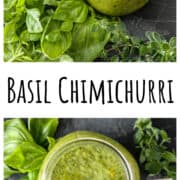
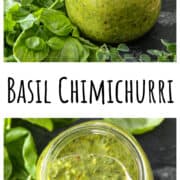
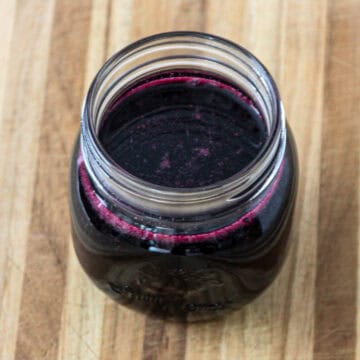
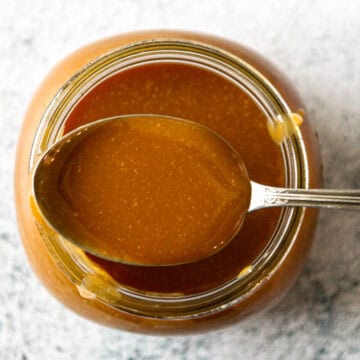
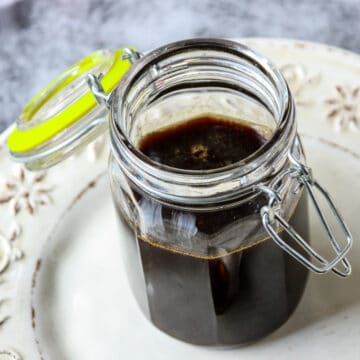
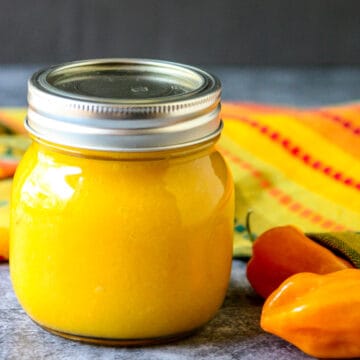

Colleen says
This chimichurri is super fresh and has a ton of flavor. And it takes just a few minutes to make.